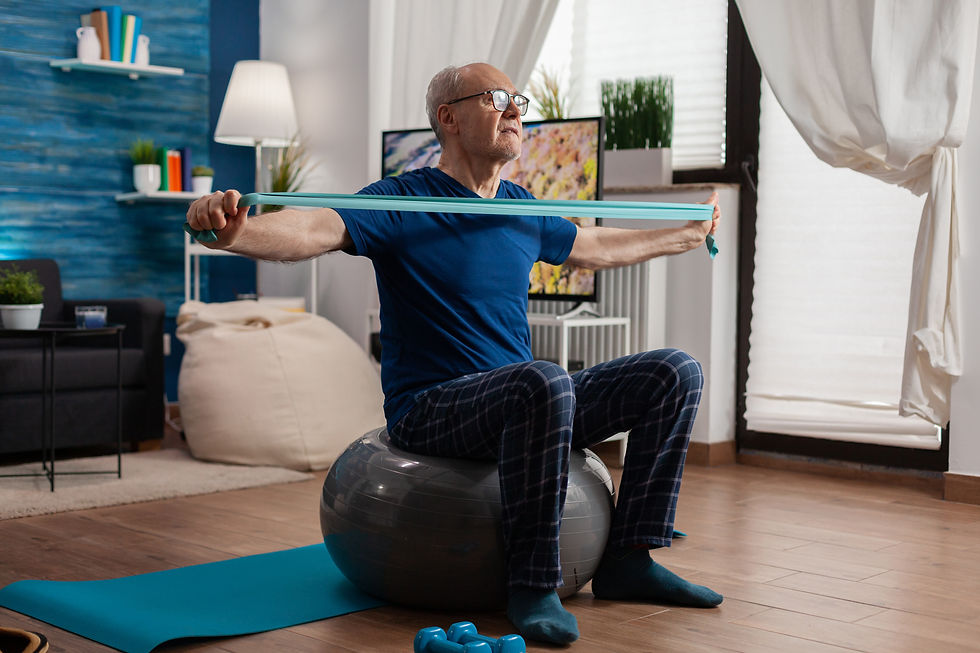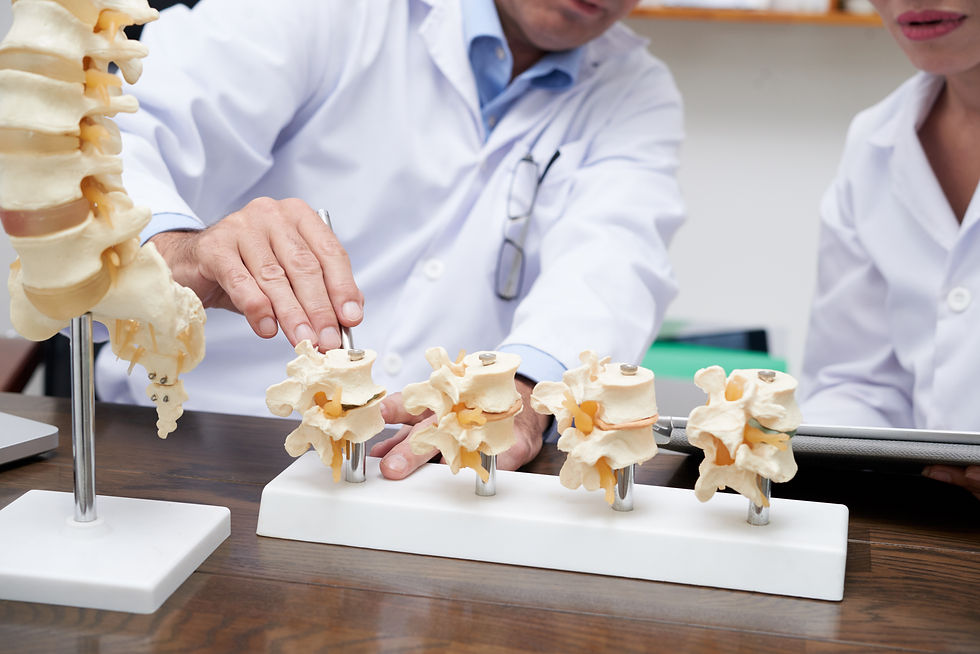The Remarkable Longevity of Women: What We Can Learn
- Jordan Pollard

- Mar 11
- 5 min read

Happy International Women’s Day! This week, as we celebrate the incredible strength, resilience, and achievements of women worldwide, let's take a moment to highlight something extraordinary—women consistently outlive men, making longevity a defining trait. But what gives them this edge?
In today's world, about 1 in 5 women will reach 100 years old, a milestone far more common in women than men. But why do women tend to live longer? And more importantly, what can we learn from them to enhance our own longevity?
The Science Behind Women’s Longevity
Research consistently shows that women outlive men in nearly every country. This gender gap in longevity is driven by biological, hormonal, and lifestyle factors that give women a distinct advantage. Understanding these mechanisms allows us to apply their benefits to our own lives, maximising both lifespan and health span.
1. Estrogen: A Built-In Protective Factor
One of the most well-supported reasons behind women’s longer lifespans is estrogen’s protective role in the body. This hormone provides multiple physiological advantages that directly impact longevity.
Cardiovascular Protection: Estrogen enhances nitric oxide production, improving blood vessel flexibility and reducing arterial stiffness. This leads to lower rates of hypertension and heart disease.
Anti-Inflammatory Effects: Estrogen regulates immune function by reducing pro-inflammatory cytokines, which play a key role in chronic diseases such as Alzheimer’s and cardiovascular disease.
Cellular Longevity and DNA Repair: Research shows that estrogen activates genes such as SIRT1, which enhances cellular repair, stress resistance, and longevity.
Lesson: While men don’t naturally produce as much estrogen, the takeaway is clear—supporting cardiovascular and cellular health is crucial for longevity. Incorporating cardiovascular exercise, anti-inflammatory foods rich in omega-3s, and prioritising recovery strategies can mimic some of estrogen’s protective effects.
2. A Stronger Immune System
Women have a more robust immune response than men, leading to better disease resistance and lower mortality rates from infections. This advantage stems from estrogen’s effect on T cells, macrophages, and antibody production, which strengthens the body’s ability to fight off pathogens.
Lesson: Strengthening immunity is key for everyone. Engaging in weekly high-intensity interval training (HIIT) significantly increases the production of white blood cells, specifically T and B cells (antibodies), compared to other types of exercise. Additionally, maintaining consistent sleep patterns is crucial for enhanced immune function, helping to fend off illness and increase longevity.
3. Chromosomal Advantage
Women possess two X chromosomes, while men have only one (XY). The X chromosome carries genes critical for DNA repair, immune function, and cellular resilience. This genetic redundancy gives women a backup mechanism that enhances survival and protects against age-related cellular damage.
Additionally, women tend to have longer telomeres, the protective caps at the ends of DNA strands that shorten with age. Estrogen stimulates telomerase, the enzyme responsible for maintaining telomere length, which slows down cellular aging and promotes longevity.
Lesson: While we can’t change our genetics, we can support DNA repair and slow cellular aging through lifestyle choices. Prioritizing nutrient-dense foods rich in antioxidants, reducing environmental stressors (such as pollution and processed foods), and engaging in longevity-focused practices like fasting can all contribute to better genetic resilience.
4. Lifestyle and Social Bonds
Women are more likely to engage in preventative health behaviours, such as regular medical checkups, balanced nutrition, and structured exercise routines. They also cultivate stronger social networks, which play a significant role in longevity.
Oxytocin and Longevity: Women naturally have higher levels of oxytocin, the “bonding hormone,” which reduces stress and improves cardiovascular health. Strong social connections are linked to a 50% increase in survival rates over time.
Emotional Resilience and Stress Management: Women tend to have greater emotional intelligence, allowing them to manage stress more effectively. Since chronic stress accelerates aging by increasing cortisol production, practising mindfulness, meditation, and community engagement is a proven way to enhance longevity.
Lesson: Longevity isn’t just about the body—it’s also about the mind and relationships. Investing in strong social bonds, engaging in group activities, and prioritizing emotional well-being can extend life and improve its quality. Make an effort to foster meaningful relationships and community connections, as the total number of close and quality relationships is the number one factor influencing longevity.
5. The Power of Movement
Women, especially in older age groups, engage in consistent, lower-impact movement such as walking, yoga, and resistance training. These activities contribute significantly to longevity by maintaining bone density, joint health, and cardiovascular function.
Slow-Twitch Muscle Fiber Advantage: Women have a higher percentage of slow-twitch muscle fibres, which are more fatigue-resistant and efficient for endurance activities. This allows for greater movement consistency, a key factor in aging well.
Joint Health and Flexibility: Women’s connective tissues tend to be more elastic, making practices like yoga and Pilates particularly beneficial for injury prevention and mobility as they age.
Lesson: Movement should be a lifelong habit. Instead of focusing solely on high-intensity workouts, prioritise longevity-friendly movement patterns—daily walking, joint mobility drills, and structured resistance training to maintain strength and independence.
Exercise Recommendations for Longevity
To harness the benefits of movement for longevity, focus on a balanced exercise approach that includes:
Strength Training (2-3x per week): Increases bone density, preserves muscle mass, and supports metabolic health. Prioritise compound movements like squats, bent-over rows, and push-ups.
Aerobic Activity (150-300 minutes per week): Enhances cardiovascular function, oxygen utilisation, and brain health. Walking, cycling, and swimming are excellent options.
Mobility and Flexibility Work (Daily): Yoga, Pilates, or dynamic stretching improves posture, joint function, and overall movement efficiency.
Balance and Coordination Exercises (2-3x per week): Helps prevent falls and maintain neuromuscular control. Try single-leg exercises, tai chi, or functional drills.
High-Intensity Interval Training (1-2x per week): HIIT is the number one type of exercise for your immune system. Try a 4x4x4 HIIT program, 4 minutes on, 4 minutes active rest, for 4 sets; a stationary bike is a great place to start for this exercise protocol.
Applying These Lessons to Our Own Lives
Women don’t just live longer; they also live better when they prioritise health, movement, and connection. By integrating these strategies into daily life, we can optimise longevity while enhancing our quality of life.
From an exercise physiology standpoint, a consistent routine of strength training, cardiovascular fitness, and mobility work is essential for healthy aging. Coupled with nutrient-dense eating, restorative sleep, and stress reduction techniques, these habits create a foundation for living well into later years.
The message is clear: longevity is not just about extending years, but about making those years vibrant, strong, and fulfilling. By taking inspiration from women’s longevity strategies, we can all increase our chances of living younger for longer.
Live Younger for Longer
If you're looking for expert guidance on optimising your health for longevity, my practice is dedicated to helping people move, feel, and live better for decades to come. Let’s start building your roadmap to 100 today!



Comments